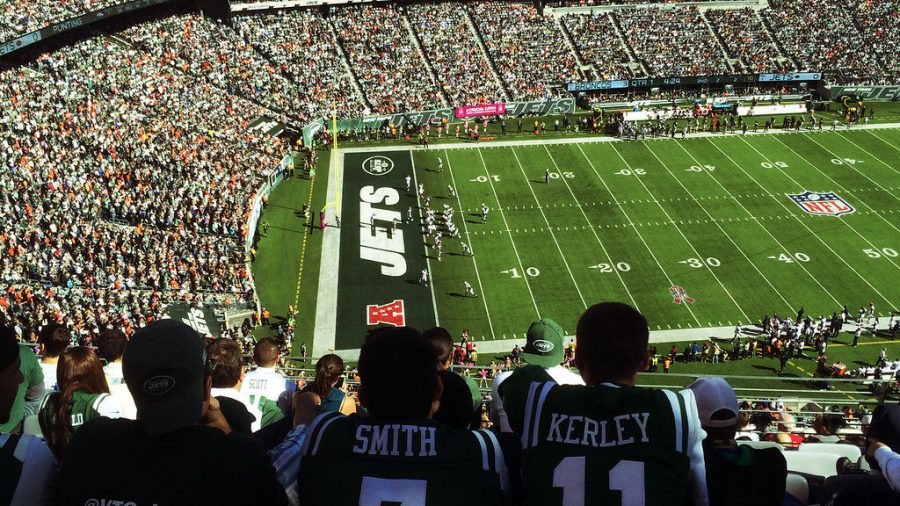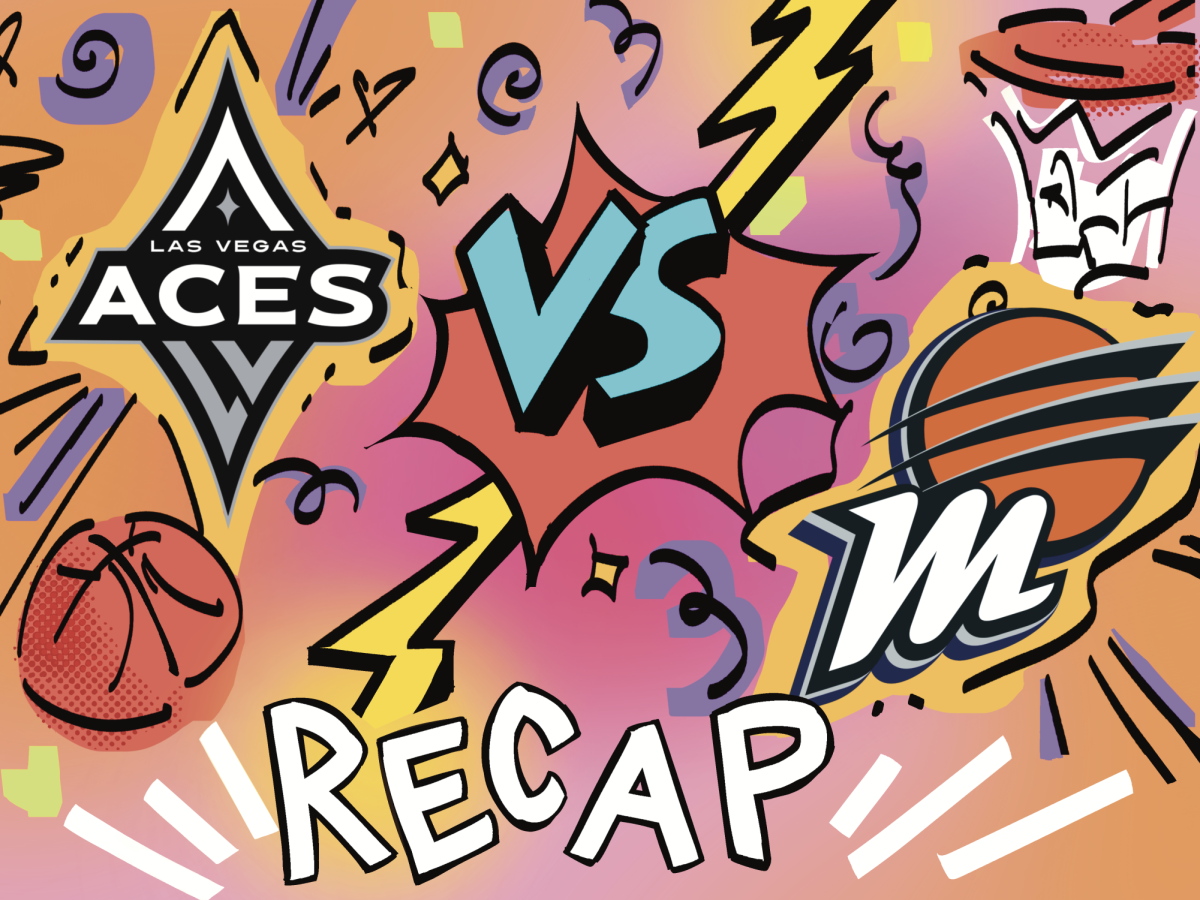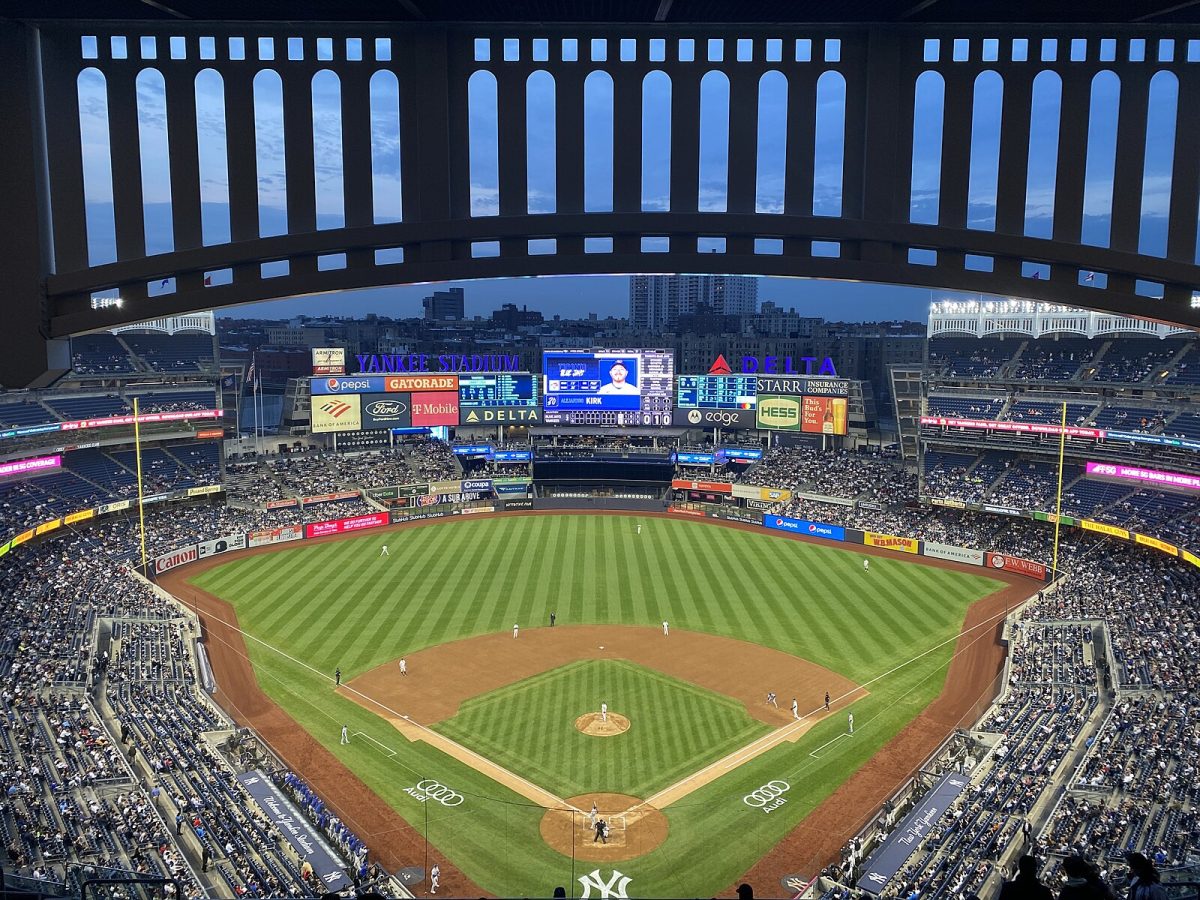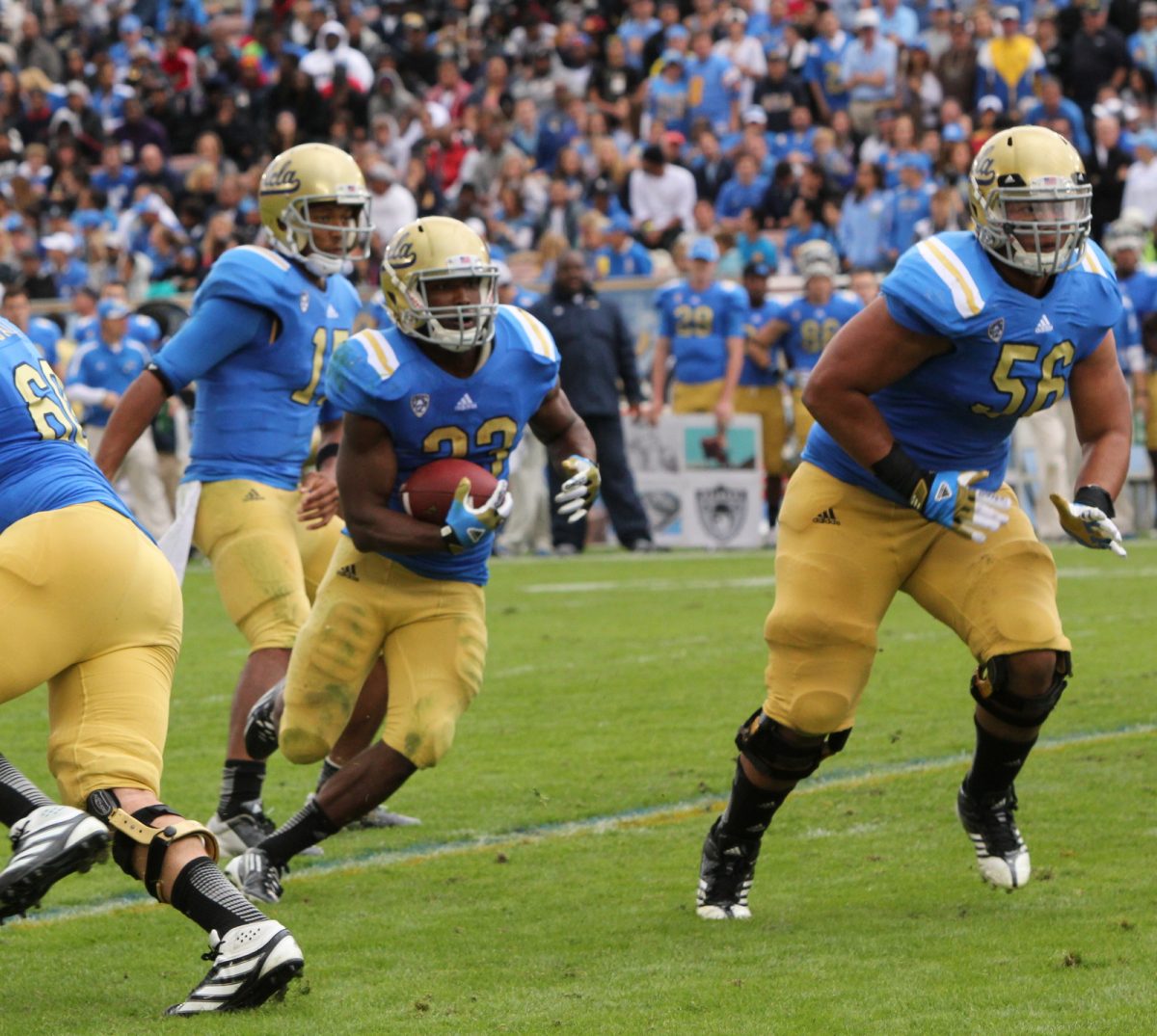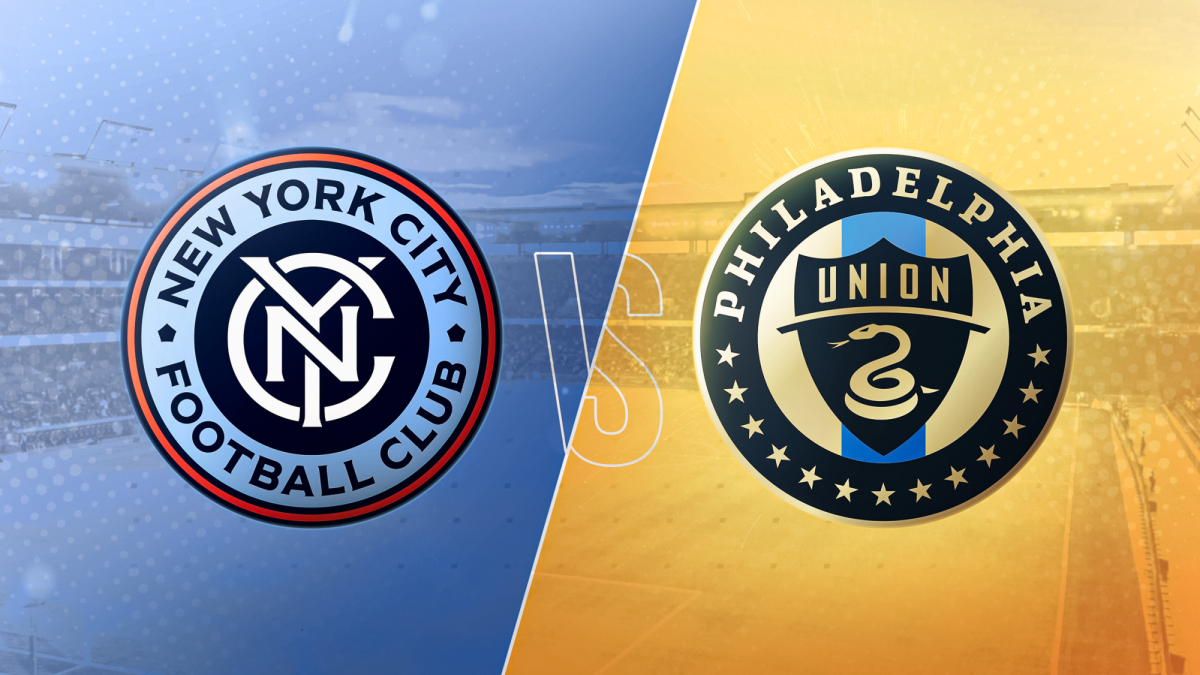J-E-T-S — Just End the Suffering! As the New York Jets approach their sophomore season under coach Adam Gase, there is a renewed sense of hope amongst fans of Gang Green. Quarterback Sam Darnold is now fully healthy and running back Le’Veon Bell is still with the team, much to the chagrin of Gase. In addition, the defense is decent, still anchored by star defensive back Jamal Adams. The 2020 NFL Draft was the first with general manager Joe Douglas at the helm, where his selections were met with a combination of praise and confusion.
Douglas’ vision for the Jets was a team that took pride in their work inside the trenches. “We’re going to try to build a team that can impose their will on other teams and to do that you have to be strong up front,” said Douglas in his introductory press conference last season. Throughout last season, it was clear that the offensive line needed a drastic overhaul, as the five men lining up in front of the quarterback were turnstiles. Having given up 52 sacks, the Jets’ quarterbacks took a beating and were never able to generate quality offense. In terms of total yards gained on offense, Gang Green finished dead last. Although they had a bellcow back in Bell, the Jets were only able to average 78 yards per game on the ground, second-to-last in the league. Offensive futility starts on the line, and Douglas took steps to rectify the issue.
Having signed five offensive linemen in free agency, the Jets used their first-round pick to select offensive lineman Mekhi Becton from the University of Louisville. Becton was highly regarded by draft analysts as one the “big four” of elite offensive linemen in this year’s class — and for good reason. Standing at a massive 6’7’’ and weighing 364 pounds, Becton is a mammoth who can protect any quarterback’s blindside. Combining his massive frame with a 40-yard dash time of just above five seconds, Becton had no problem catching up to defenders who tried to speed by him, with some edge rushers being baptized into the cold artificial turf, never to be seen again. Last season, Becton only allowed three pressures in 298 pass blocks en route to first-team All-ACC honors. Watching highlights of Becton pushing an entire truck in the offseason is enough for Jet fans to be salivating over his potential command of the line. “It’s a big man who can move people off the ball in the run game and he’s a tough guy to get around playing that tackle spot. He brings an edge to us. He brings nasty to the offensive-line room,” said coach Gase. However, no one is happier than Darnold, who will have protection for his blind side as he works to improve his timing and decision-making. The Jets also addressed the offensive line in the fifth round, drafting Cameron Clark from the University of North Carolina at Charlotte. Clark’s versatility, being able to play tackle and guard, along with his leadership ability provides the Jets O-Line with much-needed depth.
Along with the offensive line, the Jets’ most glaring need was a wide receiver. Top target Robby Anderson left in free agency to the Carolina Panthers, leaving Gang Green without a number one option. Jamison Crowder performed admirably in his first season with the Jets, finishing as the team’s leading receiver. However, the Jets failed to have a 1,000-yard receiver for the fifth consecutive year. With no deep threat, and the best receiver on the roster being a slot receiver who was utilized as a main option last season, the message was clear from fans and from the players: get the quarterback some weapons. Fortunately, this draft was not bereft of weapons. In fact, this year’s crop of wide receivers was arguably the best in the history of the draft.
Heading into day two of the draft, this was the time for Douglas to make his money. In the past, general managers from Mike Tannenbaum to John Idzik and Mike Maccagnan have failed miserably at this stage, drafting bust after bust. However, 2020 is a time for change, a time for hope. Douglas started wheeling and dealing in day two, trading back 11 picks in the draft to gain extra draft capital. While fans were clamoring for a receiver at 48, Douglas proved to be a genius in this regard, selecting wide receiver Denzel Mims at 59. Mims has the look of a main target, standing at 6’3”. At the combine, Mims ran a 40-yard dash time of 4.38, with the complimentary experience of running track in high school. His speed and gamebreaking double moves were showcased to great effect during his four years at Baylor University. Mims was one of only five receivers in Football Bowl Subdivision play to accumulate 50 receptions in each of the last three seasons, and he led the Bears with 1,020 yards and 12 touchdowns. Mims will bring a chip on his shoulder, having fallen to the end of the second round.
“This is added speed, added depth to that wide receiver position. This kid can absolutely run. He’s a great pickup for the Jets,” said hall of fame wideout Michael Irvin about Mims. The Jets also drafted an offensive weapon in day three, adding running back La’Mical Perine from the University of Florida. In his senior season, Perine had 677 rushing yards and six touchdowns, along with 262 receiving yards and five touchdowns. Perine will provide depth to complement Bell in the backfield, his ability to run and catch will be significant in Gase’s schemes.
On the defensive side of the ball, the Jets finished day two addressing the secondary and the edge. Early in the third round, the Gang Green selected Ashtyn Davis, a defensive back from the University of California at Berkeley. Davis, who operated as a free safety, had seven career interceptions and returned punts and kicks. Davis had 55 tackles in his senior season, but he could play anywhere in the secondary. His versatility and athleticism were especially attractive to defensive coordinator Gregg Williams, who values do-it-all players. Later in the third round the Jets went back to the Swamp, drafting defensive end Jabari Zuniga. The self-proclaimed “steal of the draft,” Zuniga had a forgettable 2019 season at Florida, injuring his ankle twice. However, he finished the season with 14 tackles, including three sacks and 5.5 tackles for loss. In addition, midway through the season, he was on the watchlist for the Chuck Bednarik Award, given to the top defensive player in college. Zuniga has the tools needed to provide a burst of speed over the edge, a position in demand since the departure of Leonard Williams. On day three, the Jets again addressed the secondary, selecting defensive back Bryce Hall from the University of Virginia. Hall suffered a horrific injury last year, dislocating his ankle and breaking his fibula. However, his 2018 season highlighted serious potential for Hall, becoming a secondteam All-American. He was first amongst FBS defensive backs with 21 pass breakups, second with a 97.7 tackle percentage and a 39.7 completion percentage as the nearest defender. A ballhawk, Hall is a physical defender who will work well in the Jets’ zone coverage. Hall provides much needed depth in the secondary, especially with the uncertainty surrounding the contracts of their two most significant starters — Jamal Adams and Marcus Maye.
The other two draft picks provide a stark contrast. The last pick the Jets made in the sixth round addressed a need on special teams, as Gang Green selected Braden Mann from Texas A&M. In the 2018 consensus All-American, Mann averaged 51 yards per punt in his junior year, leading the nation en route to the Ray Guy Award which is given annually to the nation’s top punter. 2018 also saw Mann break multiple FBS records, including single-game punting average, the single-season record for most punts of 60 yards or more and single-season punting average. Mann has the ability to punt the soul out of the pigskin and Mel Kiper Jr. described Mann as a “pro-bowl caliber punter.” This pick might be the most logical but confusing. Gang Green’s incumbent punter, Lachlan Edwards, is an unrestricted free agent. With Mann now on the Jets, Edwards’ services are no longer required. However, the Jets had far more pressing needs than drafting a punter.
The other draft pick was the most confusing. In the fourth round, the Jets took quarterback James Morgan from Florida International University. Morgan is a gunslinger, more than willing to let the ball fly. His arm strength is undeniable but the problem is his accuracy. His completion percentage his senior year was 58 percent, and his overall production decreased. Morgan views himself in the shadow of Brett Favre, but the general consensus is that Morgan is a developmental project.
The issue is this: The Jets cannot develop, so why take a chance in the fourth round? The Jets have taken 10 quarterbacks in the past 15 years, more than any other team in the league. Even though Gase was touted as a “quarterback whisperer,” last season saw Darnold, Luke Falk and even Trevor Siemian look foolish on the field. The culture is not there to develop a quarterback. Even if the Jets had their hearts set on a quarterback — why Morgan? Jake Fromm, a more accomplished and well-known player, was available in the fourth round. Fromm has more raw talent, a greater potential and has the ability to be a backup if necessary. This pick is one that makes absolutely no sense and will most likely end in a listless career for Morgan.
Overall, Douglas performed well in his first draft. Offensive line draft picks are never sexy, but they are needed. Douglas wanted to shore up the O-Line and he did. They needed a star wideout and Douglas got one in Mims. The real testament to the success of this draft class lies in the first two picks. If Becton and Mims turn out to be stars, then this was a success. If not, the Jets could be set back years.


